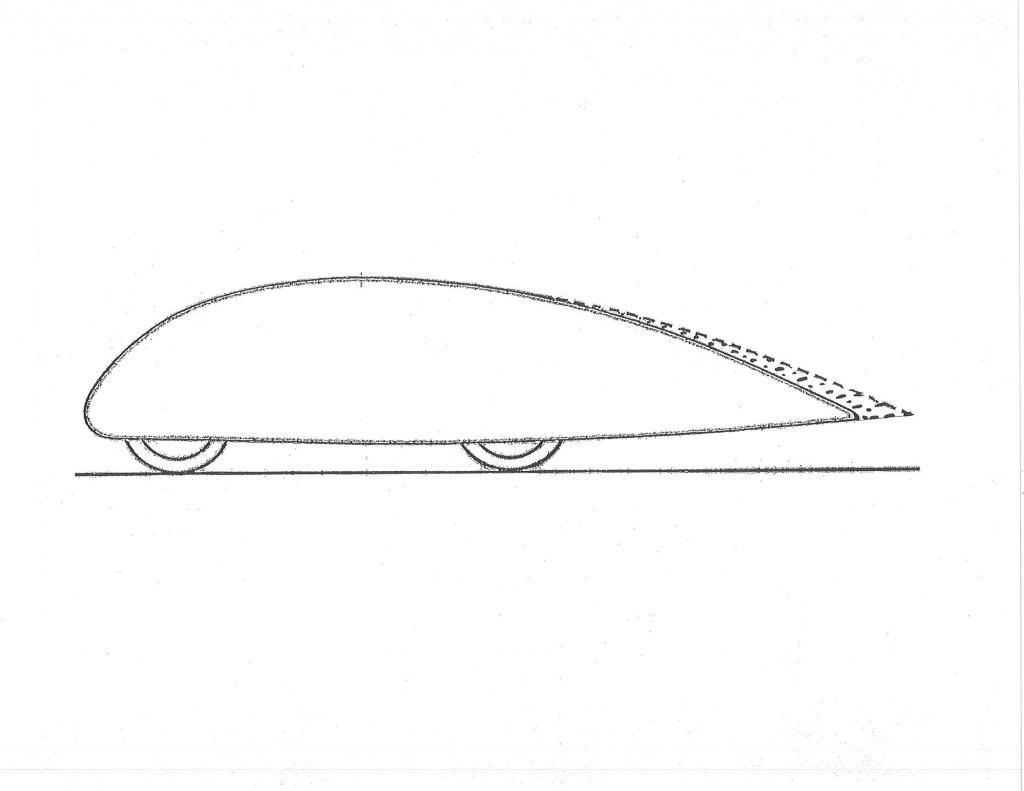Quote:
Originally Posted by Sven7

Ok, I'm trying to wrap my artist head around this.  If I am reading this correctly:
-A wing or pumpkin seed shape is more efficient at low speeds than a conventional teardrop
-It is advantageous to add flow trips at the nose to reduce wake size even though the wake is now turbulent
-"supercritical" in this context means that the wake is smaller than it would be on a "normal" (figure A) shape
-There is no merit to the backward-cone theory
Is that all correct?
PS-
Corollary: does this indicate that Paul Jaray meant for his Ley T6 "pumpkin seed" to go very low speeds? |
*anything with a blunt,rounded nose and fully-tear-dropped tail,whether wing,or half-body of revolution will be good.
*to be the lowest drag the wing will try and be laminar,with its thickest point moved as far rear as possible to delay the transition to a turbulent boundary layer (to minimize skin friction).If there is any turbulence in the ambient air,or if there is any crosswind,the wing will transition directly to a turbulent boundary layer.But this is okay,as it will be impossible to have separation.
*to be the lowest drag half-body, it will need a supercritical Reynolds number or else the flow will separate before it ever reaches the max camber point along the body and never have reattachment.
------------------------------------------------------------------------
So the Reynolds number is critical if the bodies are very short and going really slow.
Reynolds number = Length (L) X Velocity (V) / kinematic viscosity (v)
or, Rn = L X V / v
You can use 0.00015 ft-sq/second for v
1/v = 6380
so Rn = L X V X 6380 as a easy working number.
--------------------------------------------------------------------------
With turbulence in the ambient air,the TBL transition occurs around Rn= 75,000. This would be your minimum target based upon your length and velocity on the race course.
-------------------------------------------------------------------------
If your Reynolds number comes in low you need to roughen the nose to force the TBL transition,then you can get attached flow to the rear.
--------------------------------------------------------------------------
Supercritical refers to the Reynolds number which allows the transition to TBL.(around 75,000)
--------------------------------------------------------------------------
The cone,pointed end into the wind would have 54% higher drag as the cone's point headed backwards IF it has a convex-hemispherical nose.(think of an ice cream cone of 20-degrees angle:Cd 0.1698 vs Cd 0.0925.
Pointed end first,with the big rear end won't allow any deceleration of the flow before separation,which means low pressure in the wake,which increases the pressure drag,which violates the fundamentals of streamlining.
--------------------------------------------------------------------------
Jaray was designing for passenger cars at normal driving speeds.His pumpkin seed would be low drag at any speed as long as the Reynolds number was supercritical.This is why we have to be careful with scale models in a wind tunnel.If small models are not run at sufficiently high airspeeds,then they may never reach TBL,and the Cd may bounce all over the place.
